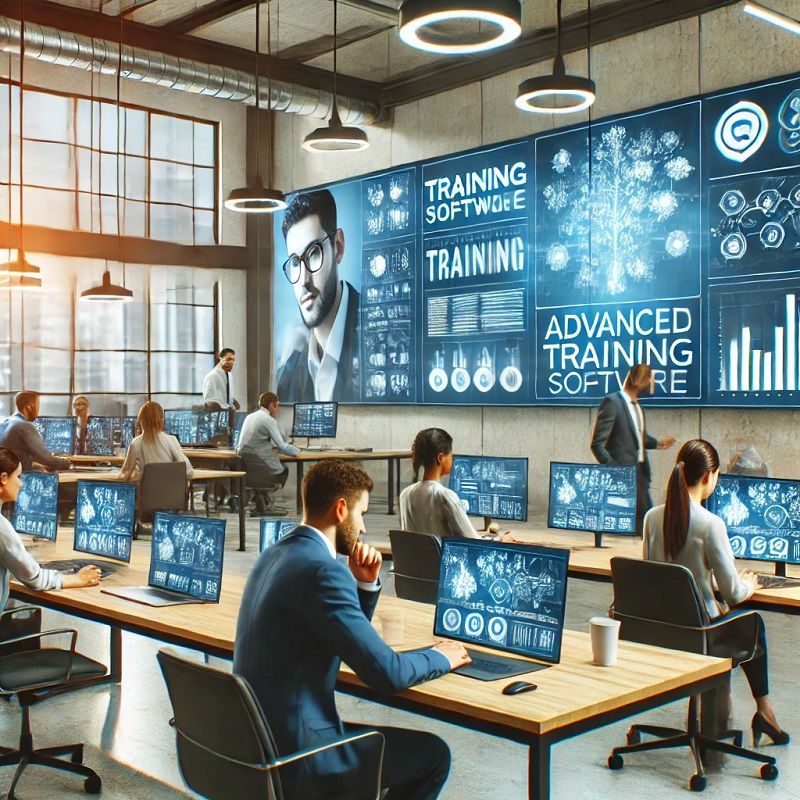Streamline Your Team's Learning Journey with Advanced Employee Training Software
- Alisa Herman
- Feb 11
- 4 min read

Introduction: Why Modern Teams Need Smarter Training Solutions
The way businesses train employees has changed dramatically. Traditional training methods—such as in-person workshops, printed manuals, and lengthy onboarding sessions—often result in inconsistent learning experiences and lower engagement. With hybrid workforces, evolving skill demands, and fast-paced business environments, companies need scalable, flexible, and data-driven learning solutions.
This is where advanced employee training software plays a crucial role. It centralizes learning, provides personalized development plans, automates compliance tracking, and enhances engagement with interactive features. The right training platform ensures that employees can learn anytime, anywhere, while organizations can monitor progress and optimize training efforts.
In this guide, we’ll explore how modern training software streamlines the learning journey, making training more efficient, engaging, and results-driven.
Personalized Learning Paths for Every Employee
Every employee has unique learning needs, based on their job role, experience level, and personal learning style. Personalized training ensures that employees receive relevant, customized learning experiences, rather than one-size-fits-all courses.
How Advanced Training Software Personalizes Learning:
AI-Driven Course Recommendations – Training platforms analyze an employee’s role, skills, and progress to suggest relevant learning modules.
Self-Paced Learning – Employees can complete training at their own speed, ensuring better retention and understanding.
Real-Time Performance Tracking – Managers and HR teams can monitor employee progress and adapt training accordingly.
With personalized learning, employees are more engaged, and businesses see better training outcomes.
Gamification: Making Learning Engaging and Rewarding
Traditional corporate training can be dull, leading to low engagement and poor knowledge retention. Gamification transforms learning into an interactive experience that keeps employees motivated.
Gamification Features That Enhance Learning:
Badges and Certifications – Employees earn badges upon completing modules, creating a sense of achievement.
Leaderboards – Friendly competition among team members fosters motivation and engagement.
Challenges and Rewards – Employees receive incentives for completing training milestones.
By incorporating game-based elements, companies create a learning environment that is fun, engaging, and effective.
Mobile Learning: Anytime, Anywhere Access to Training
With remote work and flexible schedules becoming more common, employees need mobile-friendly training options. Mobile learning ensures that training is not limited to a desktop or office setting.
Benefits of Mobile Learning:
On-the-Go Access – Employees can complete training modules on smartphones or tablets.
Offline Learning – Some LMS platforms allow employees to download courses and complete them offline.
Microlearning Modules – Bite-sized lessons help employees learn efficiently without disrupting their workflow.
Mobile learning enhances accessibility, allowing employees to learn when it’s most convenient for them.
AI-Powered Analytics: Data-Driven Training Decisions
One of the biggest advantages of advanced employee training software is the ability to track learning progress and analyze performance data in real-time.
Key AI-Driven Training Analytics Features:
Completion Rates – Tracks how many employees have finished their training.
Skill Gap Identification – AI detects areas where employees need additional training.
Customized Reporting Dashboards – HR and leadership teams can review training success metrics and optimize learning paths.
By leveraging data-driven training decisions, companies ensure that training programs are effective and continuously improving.
Social Learning and Collaboration in Training Programs
Learning isn’t just about absorbing information—it’s also about sharing knowledge and collaborating with peers. Social learning features create a community-driven training environment that encourages teamwork and engagement.
Ways Training Software Supports Social Learning:
Discussion Forums – Employees can ask questions, share insights, and engage in knowledge exchange.
Live Training Sessions – Webinars and virtual classes provide interactive, real-time learning experiences.
Peer Reviews and Feedback – Employees can provide constructive feedback on assignments and projects.
Collaboration within training programs helps reinforce concepts and fosters a stronger learning culture in the workplace.
Automating Compliance and Certification Tracking
Staying compliant with industry regulations and company policies is crucial. Automated compliance tracking ensures employees complete mandatory training on time, reducing the risk of compliance violations.
How Compliance Training Automation Works:
Automated Course Assignments – Employees are enrolled in required training programs automatically.
Deadline Reminders – Employees and managers receive notifications about upcoming training deadlines.
Audit-Ready Reporting – Businesses can generate compliance reports for regulatory audits and legal reviews.
By automating compliance training, companies reduce administrative workload and ensure employees stay up to date with regulations.
Integrating Training Software with Business Operations
To maximize effectiveness, training platforms should integrate seamlessly with existing business tools. A well-integrated LMS ensures that learning aligns with business goals and HR workflows.
Essential LMS Integrations:
HR Software (BambooHR, Workday, ADP) – Syncs employee training progress with HR records.
Project Management Tools (Asana, Trello) – Links training progress with project assignments.
Communication Platforms (Slack, Microsoft Teams) – Provides real-time training updates and reminders.
Seamless integration ensures training becomes part of daily operations, rather than a disconnected process.
Future Trends in Employee Training Software
The future of employee training is technology-driven, adaptive, and immersive. Companies investing in cutting-edge learning solutions will stay ahead in workforce development.
Emerging Trends in Training Software:
AI-Powered Adaptive Learning – Automatically adjusts training content based on employee performance.
VR and AR Training – Provides hands-on, immersive learning experiences for practical skill development.
Voice-Activated Learning Assistants – AI-powered chatbots help employees navigate training courses.
Microlearning for Just-in-Time Training – Delivers short, focused training modules that employees can access whenever needed.
Staying ahead of these trends ensures companies maintain a highly skilled, future-ready workforce.
Conclusion: The Key to a Smarter, More Efficient Workforce
Investing in advanced employee training software is no longer optional—it’s essential for business success. Whether for onboarding, compliance, upskilling, or performance tracking, modern training platforms streamline learning, boost engagement, and improve efficiency.
Key Takeaways:
Personalized learning ensures employees receive relevant training tailored to their roles.
Gamification and interactive features enhance engagement and knowledge retention.
Mobile-friendly learning provides on-the-go access, making training more convenient.
AI-powered analytics track performance and optimize learning strategies.
Seamless LMS integration with business tools reduces administrative burden and increases efficiency.
For businesses looking for a scalable, AI-driven training solution, SkyPrep offers an intuitive, feature-rich platform that simplifies workforce training and ensures continuous learning and development. Investing in SkyPrep means empowering teams with smarter, more effective learning experiences.






Comments